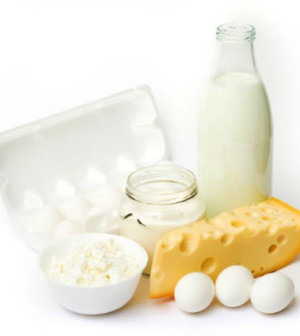- Finding Unshakable Power in a World That Wants to Pull Us ApartPosted 5 months ago
- What could a Donald Trump presidency mean for abortion rights?Posted 5 months ago
- Financial Empowerment: The Game-Changer for Women in Relationships and BeyondPosted 7 months ago
- Mental Health and Wellbeing Tips During and After PregnancyPosted 7 months ago
- Fall Renewal: Step outside your Comfort Zone & Experience Vibrant ChangePosted 7 months ago
- Women Entrepreneurs Need Support SystemsPosted 7 months ago
Is vitamin D deficiency casting a cloud over your health?

by Marcelle Pick, OB/GYN NP
I just returned from a conference where everyone was discussing vitamin D. It’s been a hot topic in both conventional and alternative medicine lately because vitamin D deficiency is widespread and seems to be related to so many health concerns: osteoporosis, depression, heart disease and stroke, cancer, diabetes, parathyroid problems, immune function — even weight loss.
Many of today’s conventional clinicians received little to no training in medical school for this problem. They may not be in the habit of testing for vitamin D deficiency or, if they are testing their patients, familiar with treatment. But practitioners from both sides of the aisle are seeing more cases of vitamin D deficiency and awareness is on the rise — one colleague reported that 85–90% of his patients don’t get enough D. And that’s consistent with what we see at Women to Women.
How can this be happening? And what should you do about it for you and your family? The answer isn’t as simple as drinking more fortified milk.
We’ve been testing and treating patients for vitamin D deficiencies for many years, and I know there are effective, natural strategies that work in most cases. Diagnosis is easy, and treatment with supplementation is easy, safe, affordable, and can bring wonderful results. So let’s explore vitamin D’s role in your health and how to determine what you should do.
Major vitamin D functions
- Supports key mineral absorption and metabolism (especially calcium and phosphorus in the blood and bones).
- Regulates normal cell differentiation and proliferation (e.g., prevention of cancer).
- Promotes insulin sensitivity and blood sugar regulation (insulin secretion).
- Regulates over 200 genes through binding to vitamin D receptors throughout the body.
What does vitamin D do for the body?
This essential nutrient is called a vitamin, but dietary vitamin D is actually a precursor hormone — the building block of a powerful steroid hormone in your body calledcalcitriol. It’s been known for many years that vitamin D is critical to the health of our bones and teeth, but deeper insight into D’s wider role in our health is quite new.
Vitamin D works in concert with other nutrients and hormones in your body to support healthy bone renewal — an ongoing process of mineralization and demineralization which, when awry, shows up as rickets in children andosteomalacia (“soft bones”) or osteoporosis (“porous bones”) in adults.
Researchers are discovering that D also promotes normal cell growth and differentiation throughout the body, working as a key factor in maintaining hormonal balance and a healthy immune system. It appears that calcitriol actually becomes part of the physical composition of cells, assisting in the buildup and breakdown of healthy tissue — in other words, regulating the processes that keep you well.
What’s more, evidence from studies tracking the prevalence of disease by geography and nationality shows clear links between vitamin D deficiency and obesity, insulin resistance, heart disease, certain cancers, and depression. Since most of these problems take many years to manifest, vitamin D deficiency has been overlooked by many providers for a very long time. I test all of my patients, and have been surprised to find that more than 85% come up with a vitamin D deficiency.
Your body can’t create vitamin D on its own. Instead, it’s designed to make it through sun exposure. In theory, you can make an ample supply of vitamin D with as little as a couple of hours per week in the sun — provided the UVB rays are strong enough. You can also ingest D through food, especially fatty fish like wild–harvested salmon. Plus, lots of foods are fortified nowadays, so vitamin D deficiency should be an easy problem to solve, right? But the truth is, we’re just not getting enough, and so many of us aren’t even close.
Vitamin D requirements
The growing awareness of how much our bodies rely on vitamin D has raised concern that the dietary recommended daily intake values (DRI’s) are woefully obsolete — 200 IU (International Units) a day for adults 19–50 years old, 400 IU for those 51–70, and 600 IU for those over 70. Experts now agree that the DRI’s for vitamin D are way too low, particularly for people who don’t get sufficient sun exposure.
Some studies have shown that adults need 3000–5000 IU per day, and others indicate healthy adults can readily metabolize up to 10,000 IU vitamin D per day without harmful side effects. The European Union’s Scientific Committee on Food lists 2000 IU per day as the safety cut-off, as does the US Food and Nutrition Board. But the latest science strongly suggests most adults should be taking more. What gives? We agree that unless you have testing and monitoring, there is wisdom in keeping the safe upper intake at 2000 IU per day. On balance, the point here is that vitamin D at doses far higher than today’s daily intake values (DRI’s) appears to be safe, to promote optimal health, to reduce the risk of many serious diseases, and even to speed healing for serious health concerns.
Vitamin D supplementation appears beneficial throughout our lifespan, from in utero to advanced age. A recent long-term study indicates that we are at less risk of developing osteoporosis later in life if our mothers had adequate stores on board while pregnant. Another age group needing ample vitamin D is teenage girls living in northern climates, who for much of the year cannot get enough sunlight to make enough vitamin D naturally. Optimal bone growth and accumulation during puberty may be a factor in preventing osteoporosis later on in life, and a new, higher daily recommendation for teenage girls (2000 IU — up from 200 IU) would be wise, particularly in winter.
It’s important to note that we lose some of our ability to synthesize and absorb vitamin D as we age. As we grow older and our skin thins, the amount of the vitamin D precursor (a derivative of cholesterol) in it decreases, too. Women entering perimenopause and menopause, when there can be accelerated bone loss, can slow bone loss by getting enough vitamin D on board. The elderly, who are at increased risk of falls and fractures, also stand to benefit from taking vitamin D. Some studies in the US indicate that supplementation with vitamin D and calcium significantly reduces bone loss and incidence of nonvertebral fractures in women 65 and over. Even in sunny Australia, a two-year study conducted among the elderly showed that supplementation with vitamin D reduced incidence of falls and fractures. (But supplements alone are not enough to protect your bones for life — see our bone health section for more guidance.)
Another consideration is that not all forms of vitamin D are created equally — some are more readily usable (bioavailable). The average healthy body can naturally synthesize about 10,000–15,000 IU of vitamin D3 in the skin within just minutes of sun exposure, without ill effect. We have natural checks and balances that shut off vitamin D build-up once we get enough. When we eat sources of vitamin D, they enter the lymphatic system through the intestines, bypassing the skin’s natural shut-off valve. Nevertheless, recent studies suggest the body can use large periodic doses of oral vitamin D3 every few weeks or so and not become toxic. Still, this is a practice reserved for the therapeutic setting, where the individual is being closely monitored.
Getting back to what happens in the body, both sunlight-generated and dietary vitamin D forms go into circulation and are passed along to the liver, where they get converted into calcidiol. This is thecirculating form of vitamin D (25[OH]D, or 25-hydroxyvitamin D) that gets measured by testing labs when you have your blood drawn for a vitamin D test.
Next, calcidiol is converted in the kidneys and other organs into calcitriol. This is biologically activeform of vitamin D, also known as vitamin D3 (or 1,25[OH]2D; or simply cholecalciferol). This is the form that goes to work by attaching itself to vitamin D receptors present throughout the body. Today we know there are vitamin D receptors in some three dozen different target organs in the body! Researchers have also recently found that in addition to being converted in the kidneys to this active form, calcidiol is converted into calcitriol in about ten other organs in the body — the lymph glands and skin tissue, too, for example. These discoveries are exciting because they lead us to understand how important vitamin D is for whole-body wellness, not the least of which include prevention — and treatment — of certain types of cancer.
But you don’t need to remember a lot of forms and formulas to appreciate what this powerhouse vitamin/hormone has to offer you. The bottom line is, we still don’t fully understand all the mechanisms behind vitamin D’s actions and forms in the body — we just know our bodies rely on a certain amount and that many of us aren’t getting enough. The truth is that adequate levels are probably highly individualized and depend on a variety of factors. To know whether you’re D–deficient, you need to get a blood test from your healthcare practitioner.
How do I know if I’m getting enough vitamin D?
Awareness of vitamin D first took center stage in the early part of the 20th century, although it was described in medical writings as early as the 17th century. Children with vitamin D deficiency developed rickets, a condition where the body fails to mineralize bone. This led to the daily dosing of children with cod liver oil, and a movement to fortify milk and cereal with vitamin D as well. By the 1960’s, rickets had become a relatively rare disease.
These days, most commercial milk suppliers fortify their products with vitamin D in the form ofergocalciferol (also known as D2) or cholecalciferol (D3). Some orange juice makers are doing the same, and like many food fads, you can soon expect to see lots of other products claiming to be good for you because they’re fortified with vitamin D. While the amount in these beverages is enough to ward off malnutrition, you’d have to drink gallons a day to reach optimal levels. That’s just too much milk or juice for most adults. And, while a tablespoon or two of cod liver oil a day is still a superb idea, many people won’t touch it — you could say it’s an acquired taste!
In reality, there really is no sufficient dietary source. But let’s not write off vitamin D-fortified foods altogether. A bakery here in the US recently created a new vitamin D-fortified bread, but it contained so much vitamin D they had to go to Europe to test it, where allowable limits are more progressive. The recipe also included calcium carbonate, and the bread was reported to increase lumbar bone mineral density in the elderly patients consuming it. Fortified bread isn’t the way to go for everyone, of course, but it could provide a dietary option to weakly fortified milk and orange juice.
As we now know, sun exposure was critical for sufficient vitamin D to our ancestors. Until modern times, human beings spent a great deal of time outdoors. The origin of our species was subtropical, meaning we naturally got enough sun exposure to generate vitamin D. But as Homo sapiens migrated to less temperate climes this changed. Over many generations, the shift from a hunter-gatherer to an agrarian-based to an increasingly industrialized society also meant less and less time in the sun. Today many of us work inside sealed buildings with glazed windows, and we wear sunblock and drive everywhere in cars instead of walking outdoors. Any glass windows or sunblock with an SPF above 15 will block the UVB rays necessary for vitamin D conversion.
If you live in a region above latitude 40 (a horizontal line that runs from just below New York City west to northern California), then the sun is only strong enough between May and September to trigger the vitamin D conversion (or the converse in the Southern Hemisphere). This means that a large percentage of the population is at significant risk much of the year for vitamin D deficiency. For all these reasons we recommend 2000 IU per day for anyone at or above this latitude, at least from the fall through the spring months. But the ideal course of action is vitamin D testing, since there is so much individual variation. You would really need to see your practitioner and have your vitamin D levels tested before upping your supplemental dose beyond 2000 IU per day.
Vitamin D deficiency symptoms
Vitamin D deficiency may be characterized by muscle pain, weak bones/fractures, low energy and fatigue, lowered immunity, symptoms of depression and mood swings, and sleep irregularities. Women with renal problems or intestinal concerns (such as IBS or Crohn’s disease) may be vitamin D deficient because they can neither absorb nor adequately convert the nutrient.
Vitamin D, menopause, and osteoporosis
As we age, our bodies slowly lose the ability to mobilize vitamin D, a process that lowers our calcium absorption rates. This creates a higher risk of osteoporosis, particularly in post-menopausal women.
We’re not sure how sex hormones affect vitamin D conversion, but women seem to have a harder time stimulating the mechanism that builds bone tissue when their estrogen levels are reduced.
Calcium is clearly an important co-factor to vitamin D, and may lose efficacy if vitamin D is deficient or estrogen levels are low, as vitamin D appears to be the more critical factor in bone health. A recent study by scientists at the University of Massachusetts found that a diet rich in calcium and vitamin D can help control some symptoms of PMS, such as tearfulness, anxiety, and irritability.
What does this mean? No one knows for sure, but it is more evidence that all the systems of the body are connected and we can’t look for easy answers in one place.
Vitamin D and weight loss
I’m sure many of you have seen the “diet with dairy” ads launched by the American Dairy Council. Some studies have shown that weight loss does occur with an increase in calcium intake, while others appear to refute this. Since vitamin D is directly involved in calcium absorption, it stands to reason that vitamin D is also a factor in how the body regulates weight.
Moreover, people who have a reduced capacity to mobilize vitamin D often weigh more and have more body fat than those with full capacity. In the past 20 years multiple studies have shown a correlation between higher blood levels of vitamin D and leaner body mass.
To my thinking, what seems essential for us to understand here is the vitamin D connection with insulin resistance. Vitamin D deficiency may contribute to the wide set of disorders associated with metabolic syndrome (syndrome X), as well as to PCOS. In a study published in 2004, the authors saw a 60% improvement in insulin sensitivity in healthy, vitamin D replete adults — and concluded vitamin D was more potent than two prescription medications commonly used to treat type 2 diabetes! But the cadres of drug reps spread out across America are not likely to be reminding your healthcare practitioner about this study. They are not likely to have heard about it!
Clearly, vitamin D seems to be very important in regulating our weight, but we don’t yet understand the mechanism involved or how it relates to our environment and individual biochemistry. Still, there seems to be a correlation between rising rates of obesity and vitamin D deficiency. If you are having difficulty with insulin resistance or weight gain — or can’t keep the pounds off once you lose them — you may want to have your vitamin D levels checked by your healthcare practitioner.
Vitamin D and cancer
Evidence is mounting that vitamin D may protect against some cancers, particularly breast cancer, prostate cancer, and colorectal cancers. In fact, over 60 years of research have shown vitamin D supplementation or sunlight-induced vitamin D conversion to be associated with lower incidence of cancers.
There is also a higher incidence of breast cancer in northern climates, but whether that is associated with lower levels of vitamin D is still speculation. Vitamin D deficiency most certainly affects your immune system because calcitriol actually helps regulate cell division, so adequate levels may help sustain normal cell growth. And stress and other physiological markers can disrupt the function of vitamin D receptors, among others, making us more susceptible to unusual cell activity.
Vitamin D and depression
Another area of vitamin D research is its relationship to depression. Seasonal affective disorder, or SAD, is a situational mood disorder brought on by decreasing daylight in the winter months. High doses of vitamin D during these months have proven to be a very effective natural remedy for SAD, leading most practitioners to believe that normal neurotransmitter function depends in part on adequate vitamin D synthesis.
Vitamin D levels are inversely related to those of melatonin, another mood-regulating hormone. Melatonin helps modulate your circadian rhythms, with darkness triggering melatonin secretion by the pineal gland within your brain, bringing you down gently at night for sleep. Insomnia, mood swings and food cravings are influenced by melatonin. Sunlight shuts melatonin production off, while triggering release of vitamin D — that’s why doctors recommend getting outdoors as a remedy for jet lag.
Most of us can sense the positive influence of sunlight in our own lives by the immediate lift we get from taking a walk outdoors on a beautiful sunny day. Now there may be many factors at work that brighten our mood in such cases, but sun exposure is almost certainly a critical piece. Soaking in the warmth of the sun is one of the most relaxing activities we share with all living creatures — just watch a cat dozing in a beam of sunlight.
Healthy sunbathing — is it possible?
Our bodies are remarkably efficient. During the summer months, even as little as 15 minutes in the sun (without sunblock!) in the early morning and late afternoon is enough for most light-skinned individuals to create an ample supply of vitamin D. Skin with more pigment (melanin) may require up to 40 minutes.
But some say we are trading our longer lifespan for an increased risk of skin cancers, so don’t throw away your sunblock! It’s still important to protect your skin, particularly on your face and scalp, during the sun’s peak hours (11:00 AM – 2:00 PM) by using a lotion with SPF–15 (or higher), preferably PABA–free. Melanoma is a serious condition, and I’m not in favor of increasing your risk with unhealthy sun exposure.
This means taking care, not to be out in the sun unprotected for more than 15 minutes twice a day, in the early morning and late afternoon. If you begin to turn red before 15 minutes, cover up completely or go inside. It is never a healthy practice to burn your skin. It is also not safe to rely on tanning beds as a primary source of vitamin D, because their lamps are usually calibrated to favor UVA rays, not the UVB rays that stimulate vitamin D production.
I do believe from what I see in my patients here in Maine that the problem is on the rise. But it just makes good “body sense” to allow your skin to do what it already knows how — produce vitamin D with sunlight. What’s more, unlike with supplements, it’s impossible to get a vitamin D overdose from sun exposure.
Understanding your own individual needs and levels of tolerance for vitamin D are important parts of healthy self-care. I would like to think that you wouldn’t just assume that because you live at a far northern (or southern) latitude, or work indoors and don’t get much sun exposure, you’re vitamin D deficient and need supplements. To fully answer that question you would need to see a medical professional and get a blood test. (See our page on vitamin D testing and treatment for more information on testing and avoiding toxicity.)
What you can do to prevent vitamin D deficiency
Vitamin D deficiency may be a pervasive problem — one that we treat with specific therapies at our medical practice — but the best way to protect yourself from any deficiency is to build your health from the bottom up and let your body balance itself. We acknowledge the controversy over whether our primary source of vitamin D should be the sun, diet, or supplements. Which combination is best for you depends on many variables, including your age, nutritional status, and geographic location. In a world where so many of us are at risk of vitamin D deficiency, we recognize each of these sources as valuable. With this in mind we recommend the following steps to prevent vitamin D deficiency:
- Allow yourself limited, unprotected sun exposure in the early morning and late afternoon (no more than 15 minutes for light-skinned individuals, 40 minutes for darker skin) — particularly between May and September if you live in anywhere higher than about 35–40° latitude. (See the World Atlas to check out your latitude!)
- Eat a diet rich in whole foods. Nutrient-dense, fatty fish like mackerel and sardines are good sources of vitamin D. Egg yolks, fortified organic milk and other dairy products, and some organ meats (like liver) are also reasonably good natural sources of D. Because vitamin D is still somewhat of a mystery, we’re not sure which co-factors are important for its absorption, but we can surmise they are most fully present in wholesome food.
- Take a top-quality multivitamin every day to fill in any nutritional gaps, preferably one that includes fish oil.
- Take a vitamin D supplement. Supplement additionally with vitamin D3 at 1000–2000 IU daily if you do not get testing (or higher with testing, under the care of your healthcare practitioner). For a long time, vitamin D therapy was being prescribed as vitamin D2. To our thinking, this form has more potential for toxicity and is much less effective than natural vitamin D3. Nowadays vitamin D3 supplements are widely recognized as the superior, more bio-ready form for use in the body. How much you need really depends on your particular needs, so testing is really the best way to go for most people.
- Check with your healthcare professional about vitamin D testing. If you think you may be suffering from vitamin D deficiency, get a blood test and ask for the results. I like to see an optimal value of 50–70 ng/mL. A conventional doctor might think anywhere from 20–50 ng/mL is normal, but that recommendation will soon change as the newest research becomes incorporated into the standard of conventional care.
- Discuss adding a vitamin D supplement to your diet with your healthcare provider. If you don’t get out in the sun every day for 15 minutes in the early morning and late afternoon, consider supplementing with 1000–2000 IU per day — at least during the winter months! But you may need higher levels to reap all the long-term health benefits vitamin D has to offer you, so talk it over with your healthcare provider. This is so important for women of all ages — especially those over 50. Then be sure to get follow-up testing to monitor your response.
And keep in mind that in the end, optimal health is never about just one thing. Vitamin D is just one component of an ever-changing picture — your health is a work in progress that needs your consistent attention and support.
It may turn out that vitamin D is the key everyone’s been looking for, or more likely an important part of a far greater whole-health picture. But what matters most is how you feel and what works for you. I encourage you to investigate your personal vitamin D level with your medical practitioner as part of a comprehensive approach to your whole health.
Article Source: http://www.womentowomen.com/healthynutrition/vitamind.aspx






